Author: Christiane Wunsch
Art Basel 2024
DANIEL BLAU is pleased to present an exhibition of eleven outstanding artists exploring the fissures at the hinge of humanity this year at ART BASEL 2024.
Dan Asher, Georg Baselitz, George Condo, Jean Fautrier, Llyn Foulkes, Antonius Höckelmann, Eugène Leroy, Robert Rauschenberg, Julian Schnabel, Don Van Vliet and Andy Warhol.
Interior and exterior, landscape and mindset, chaos and form: art thrives on tracing the dichotomies of our human existence in the world, and the mid-20th century found its great artists toying with and teasing out the creative potential of our fundamental conflicts with vibrant energy.
Fair Dates:
Vernissage:
Wednesday, June 12, 2024
5 pm – 8 pm
Public Days:
June 13 – 16, 2024
11 am – 7 pm
Booth E16
Messeplatz 10
4005 Basel
Download press release here
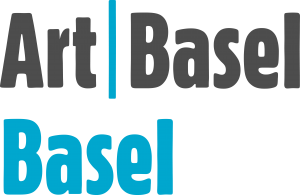
Die diesjährige Frühjahrsausstellung von DANIEL BLAU präsentiert zwei Werkkomplexe der renommierten Künstler Alfred Jensen (1903 – 1981) und A.R. Penck (1939 – 2017). Beide sind bekannt für ihr abstraktes Kunstschaffen, das komplexe Konzepte und gesellschaftliche sowie philosophische Ideen vereint.
Klare Linienführung und starke grafische Präsenz prägen ihre Werke ebenso, wie ihre kraftvolle Bildsprache. Sie erzeugen sowohl emotionale, wie intellektuelle Resonanz.
Alfred Jensen, bekannt für seine abstrakten, geometrischen Werke beschäftigte sich intensiv mit mathematischen Theorien, Zahlensystemen oder Kalender-Konzepten, u.a. dem Maya-Kalender. Seine Bilder sind durchdachte Darstellungen von kosmischen Ordnungen und philosophischen Ideen, und zeigen auch seine Auseinandersetzung mit der Farbenlehre Johann Wolfgangs von Goethe auf. Intellektuelle Erforschung und Komplexität treffen auf farbintensive geometrische Formen. Eine Auswahl von pastosen Gemälden und Malereien auf Papier soll einen Überblick über das Schaffen eines der bedeutendsten Vertreter des US-amerikanischen Abstrakten Expressionismus zeigen.
A.R. Pencks acht-teilige Tusche-Zeichnungen „Serie E“ demonstrieren seine Vielseitigkeit in der künstlerischen Ausdrucksform. Die Serie entstand im Jahr 1969 und zeichnet sich durch ihre abstrakten und grafischen Elemente sowie der Farbwahl aus. Penck verwendet in dieser Serie oft einfache Formen, wie Kreise, Quadrate und Dreiecke. Der Buchstabe „E“ stand für Penck für Existenz und Einheit. In ihrer abstrakten Art bilden die Zeichnungen diese Symbolik ebenso ab. Bei genauerer Betrachtung sind alle Zeichnungen durch eine Zäsur in der Mitte des Blattes geteilt. So drückte Penck die Spannung zwischen Kunst und Gesellschaft aus. Auch die Beschäftigung mit politischen Realitäten seiner Zeit, wie der Teilung Deutschlands ist immer wieder Gegenstand seiner Werke.
Die Ausstellung präsentiert Werke der beiden Künstler und ihre einzigartigen Stile und stellt sie in einen faszinierenden Dialog, zwischen Farbe und Form, Geometrie und Theorie.
DANIEL BLAU’s spring exhibition this year presents two sets of works by the renowned artists Alfred Jensen (1903 – 1981) and A.R. Penck (1939 – 2017). Both are known for their abstract pieces which combine complex concepts and social-philosophical ideas.
Clear line strokes and strong graphic presence shape their work as much as their powerful visual language. They resonate emotionally as well as intellectually.
Alfred Jensen, known for his abstract, geometrical works, was focused intensively on mathematical theories, counting systems or calendar concepts – for example, the Mayan calendar. His pictures are considered representations of strange orders and philosophical ideas, and also exhibit his examination of Johann Wolfgang von Goethe’s teachings on color theory. Intellectual exploration and complexity meet vividly colorful geometrical forms. A selection of paintings in oil and on paper provide an overview of the works of one of the most significant agents of American Abstract Expressionism.
A.R. Penck’s ‚Serie E‘ – a series of eight ink drawings – demonstrate his versatility in artistic expression. The series was made in 1969 and is characterized by its abstract and graphical elements as well as its color palette. In this series, Penck often used simple forms such as circles, squares and triangles. The letter ‚E‘ stands, for the artist, for ‚Existenz und Einheit‘ or existence and unity. Equally, the pictures deconstruct this symbolism through their abstraction. Upon closer inspection, all of the drawings are divided through the middle of the page by a central caesura, used by Penck to express the tension between art and society. His occupation with the political realities of his time, such as the division of Germany, is also a recurring subject in his works.
The exhibition presents works by both artists and their respective stiles, placing them in a fascinating dialogue: between color and form, geometry and theory.
Exhibition Dates:
Spring & Walk
April 13, 2024
presented by Initiative Münchner Galerien zeitgenössischer Kunst
11am – 6pm | mon – fri
Maximilianstraße 26, 80539 München
SPECIAL GUIDED TOUR 5:
Saturday, April 13, 2024
Meeting point:
from 3pm at Daniel Blau, Maximilianstr. 26
Tickets:
from the guide
Duration:
approx. 2 hours
Costs:
15,- € per person
Registration required:
info@muenchner-galerien.de
Tel. +49 (0) 89 288 08 509
Find more information about guided tours here
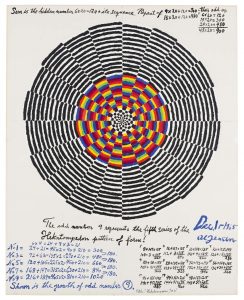
“Sun is the Hidden Number”, 1965,
gouache on paper cotton board,
127,0 x 101,6 cm, © Alfred Jensen, courtesy Daniel Blau, Munich
Alfred Jensen – A.R.Penck. Geometrie und Theorie in Farbe und Form
Our next exhibition, Farbe und Geometrie (Color and Geometry), will begin on 26 March and feature eleven works: four by Alfred Jensen (1903-81) and eight by A.R. Penck (1939-2017). Both artists are known for their abstract pieces which combine complex concepts with social-philosophical ideas.
Jensen’s work was focused on mathematical theories, numeral systems, Goethe’s teachings on color or the Mayan calendar. His drawings and paintings are considered representations of cosmic orders and philosophical ideas.
In the eight ink drawings from the „Serie E“, Penck uses simple forms such as circles, squares and triangles. Upon closer inspection, all of the drawings are divided by a central caesura. The tension between art and society and Penck’s occupation with the political realities of his time, like the division of Germany, are palpable.
The exhibition places select works by both artists into a dialogue, between color and form, geometry and their theories and demonstrates their clear line strokes and strong graphic presence..
Exhibition Dates:
March 26 – May 7, 2024
11am – 6pm | mon – fri
Maximilianstraße 26, 80539 München
The works in the exhibition are for sale. Please contact us for availability and prices.

“Sun is the Hidden Number”, 1965,
gouache on paper cotton board,
127,0 x 101,6 cm, © Alfred Jensen, courtesy Daniel Blau, Munich
Antonius Höckelmann
DANIEL BLAU, at the Maximilianstraße gallery, is pleased to present a new exhibition of works on paper by the extraordinary German artist Antonius Höckelmann (1937-2000). The exhibition opens today, Thursday 15th February.
Höckelmann studied sculpture, from 1951 until 1957, with Karl Hartung in Berlin, concentrating especially on wood as a material. It was only a gradual process of self-discovery that led him to drawing. His breakthrough came in 1977, with his participation in documenta 6; he returned to Kassel for documenta 7 in 1982, cementing his position in the contemporary art scene with numerous exhibitions throughout the decade, often alongside fellow artists like Georg Baselitz and A.R. Penck. Many of his works resist easy classification, bringing the disciplines of sculpture and painting together in one single piece; he will often combine materials both traditional and strikingly modern, like wood and bronze or Styrofoam and aluminum, in the same sculpture, before covering it in color as well.
The exhibition in the Maximilianstraße gallery spans a vibrant arc of creative years from 1964 until the early 1980s, featuring exclusively works on paper. Höckelmann here employs pastel, charcoal, graphite, and watercolor to conjure forth a host of sculptural and abstract shapes, of pastoral figures and creatures of fable and fantasy. There are echoes of Mannerism and the Baroque, too, lingering motifs from the artist’s time in Italy, and his intense study of those artistic eras. His compositions, charged with an electric sense of tension and suspense, burst with movement and dynamic surfaces, spirals and vegetative forms unfolding the cosmos of his drawings to the audience before them.
The exhibition will run until March 26th, featuring an overview of Höckelmann’s work on paper. The twelve pieces on display are excellent representatives of his art’s power and vitality, each conveying in its own way the power coursing through all his work, in its handling of color and form, of the figurative and the abstract.
Exhibition Dates:
February 15 – March 26, 2024
11am – 6pm | mon – fri
Maximilianstraße 26, 80539 München
The works in the exhibition are for sale. Please contact us for availability and prices.
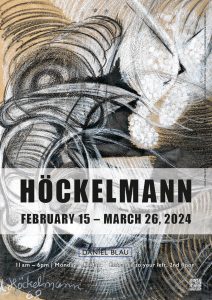
~ Hooks Deluxe ~
Fish Hooks of the Pacific Islands deluxe box set
15 copies only!
The handmade slipcase contains:
The edition is limited to 15 signed copies, numbered I-XV/XV
Price: 1900 € (excl. shipping & VAT)
Please order your copy, on a first come first serve basis here

Andy Warhol – Daido Moriyama
January 19 – 28, 2024
DANIEL BLAU is pleased to present ten new works by Daido Moriyama, along with seven of Andy Warhol’s drawings from the 1950s, at the 2024 edition of The Winter Show, taking place in New York City from January 19th to 28th.
Andy Warhol moved to New York City in 1949, immediately after earning his bachelor’s degree. He quickly made a name for himself in the sphere of commercial art, making illustrations for advertising campaigns and fashion magazines. The city shaped Warhol’s career, and during his first decade there he allowed himself to follow a dual approach to his art, a dichotomy that can be clearly seen in these drawings. On the one hand, he established his own personal freehand style, instinctive and thoughtful; on the other, he
began creating images that were easily reproducible and in unmistakable conversation with the world of advertising into which he had stepped. It was also during this phase of his career that Warhol developed his ‘blotted line’ technique, which allowed him to present a variety of different versions of his advertising ideas to clients.
Moriyama’s new works are the products of a richly complex process of creation, too. His typical approach to work involves walking through the streets around him, impulsively photographing his surroundings to capture the essence of any place he finds himself in. During his monthlong trip to New York in 1971, Moriyama employed a 35mm “half-frame”
camera, meaning that each negative frame would in fact hold two, halfsized individual exposures. Each ‚complete image‘ shows the subject in two facets captured moments apart. The artist captured over 2,000 images this way.
In 2023, Moriyama used a screen-printing technique to transfer a selection of these dual images onto large, individual canvases. The resulting works showcase Moriyama’s long-standing interest in the concept of “are, bure, bokeh”– roughly translatable as “rough, coarse, out-of-focus” – which, here,illuminates, evoked in shimmering bronzes and blacks, the atmosphere of a New York at night.
Moriyama’s 2023 creations still carry all the spontaneity of his work in 1971. His return to the series after more than fifty years also shows his rethinking of the artistic process and his experimenting with possibilities of repetition. He was surely also inspired by Andy Warhol’s concept of “seriality”. In fact, it was Warhol himself who lured Moriyama to New York in the first place and Moriyama photographed him at the time.
Our Winter Show exhibition for 2024 is able to show how these two artists respond to the city in ways that both diverge and intersect, that distinguish themselves and occasionally overlap. Warhol and Moriyama were both drawn to New York’s zeal for commerce and advertising – Warhol to Madison Avenue, where he found success as a commercial
artist, and Moriyama to the bright lights and neon signs of the city itself (recurring motifs found not only in this series but across his entire oeuvre). The use of street photography, Moriyama’s defining genre, was also a part of Warhol’s artistic process, as was the use of a range of loosely categorizable subjects including cats, cars, and flowers. We can see how these motifs came to engage Moriyama as well as he explored the city, whether wandering the Flower District or the corridors of his hotel. Both artists also clearly felt drawn to pay particular attention to the city’s fire hydrants: Moriyama photographs one in the instants before it is lost in clouds of New York City street steam, while Warhol flanks his hydrants with two women’s cartoonish legs, seemingly leaning against the red iron. Those female feet bear shoes of special noteworthiness: they are drawn in the same style that earned Warhol his job as the ‘sole’ illustrator for the I. Miller shoe company between 1955 and 1957.
DOWNLOAD press release Winter Show 2024
Opening Night Party:
January 18, 2024, 5 – 9 pm
Young Collectors Night:
January 25, 2024, 6 – 9 pm
Connoisseurs Night:
January 26, 2024, 5:30 – 8 pm
Opening Hours:
Friday, Jan. 19, 12 pm – 8 pm
Saturday, Jan. 20, 12 pm – 7 pm
Sunday, Jan. 21, 12 pm – 6 pm
Monday, Jan. 22, 12 pm – 8 pm
Tuesday, Jan. 23, 12 pm – 5 pm
Wednesday, Jan. 24, 12 pm – 8 pm
Thursday, Jan. 25, 12 pm – 5 pm
Friday, Jan. 26, 12 pm – 8 pm
Saturday, Jan. 27, 12 pm – 7 pm
Sunday, Jan. 28, 12 pm – 6 pm
Visit Website: The Winter Show
The 70th edition of The Winter Show will be held in the historic Park Avenue Armory where a breadth of works spanning 5,000 years will be presented by over 68 internationally renowned dealers. Myriad works from paintings and works on paper, fine furniture, and design, to jewelry, and contemporary ceramics and glass will be on view. Famed for its rigorous vetting practices carried out by a committee of 120 experts, the Fair’s exhibitors offer works of the highest standards of authenticity and quality in the industry.
illustration: © 2024 The Andy Warhol Foundation for the Visual Arts, Inc. / Licensed by Artists Rights Society (ARS), New York
and © Daido Moriyama Photo Foundation, Courtesy of Akio Nagasawa Gallery, Tokyo

No Place for a Vacation
DANIEL BLAU is pleased to share that this year’s winter exhibition in the gallery on Maximilanstraße will be “No Place for a Vacation”, a selection of twenty-one NASA- and underwater photographs from the mid-to-late 20th century.
Exhibition Dates:
December 7, 2023 – January 23, 2024 | extended until February 9, 2024
11am – 6pm | mon – fri
Maximilianstraße 26, 80539 München
The works in the exhibition are for sale. Please contact us for availability and prices.
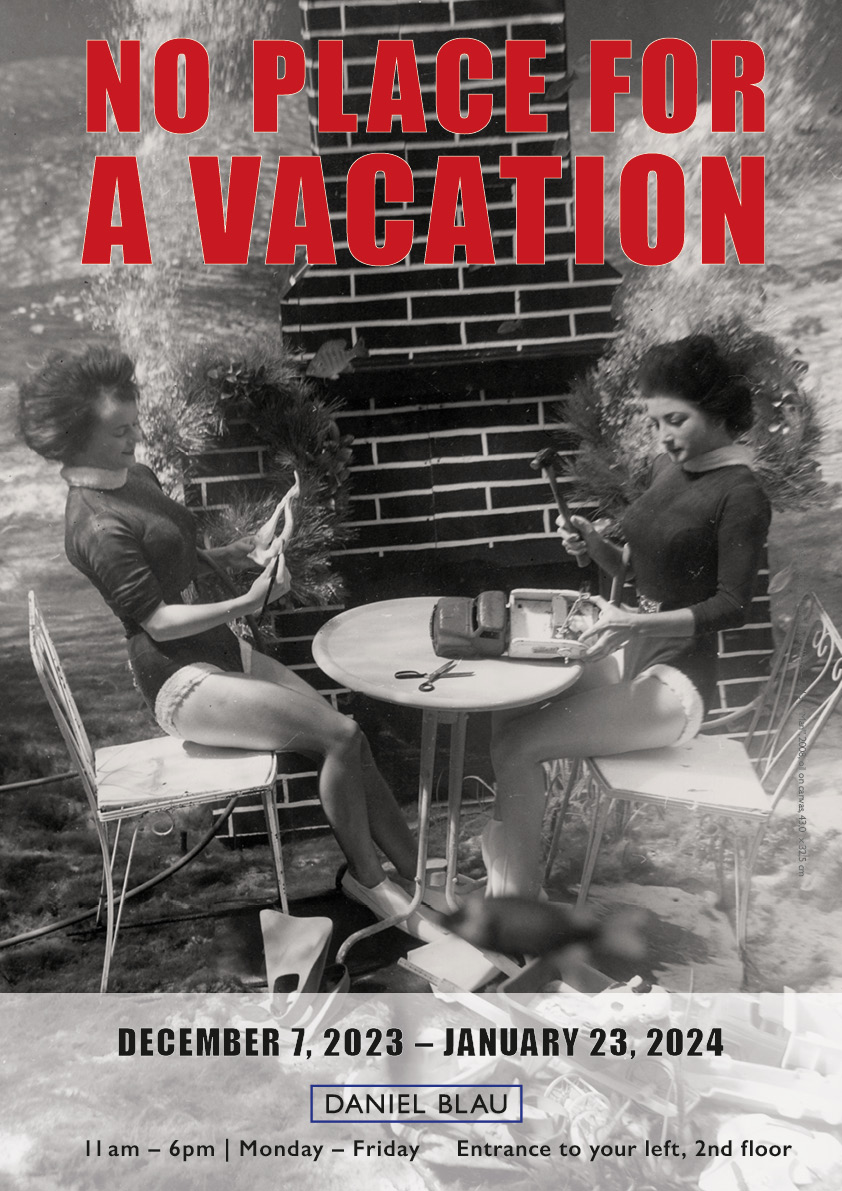
The sea, for those who live along the coast, is an important and even indispensable source of food
Fish Hooks of the Pacific Islands Vol II
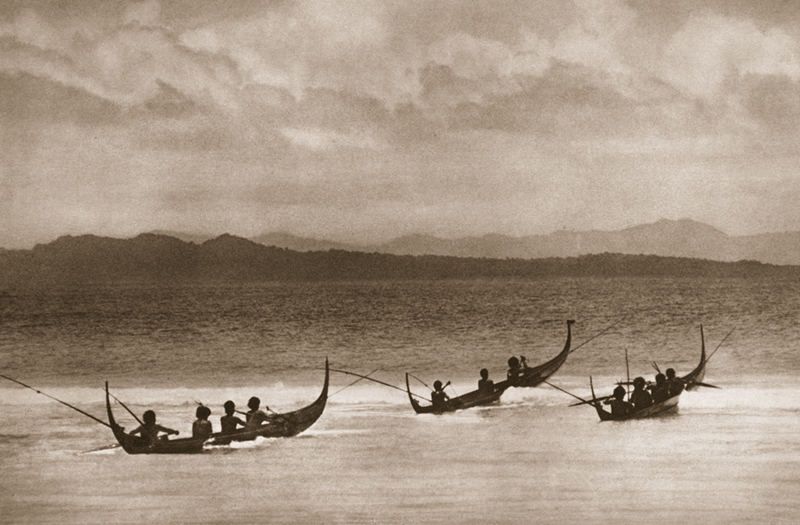
Bonito fishermen [Bernatzik, 1934: fig. 30](1)
For example: The Solomon Islands:
The sea, for those who live along the coast, is an important and even indispensable source of food. In the Pacific Ocean, this is especially true. Fishing became, more than purely a necessity of life, a ubiquitous social activity across all the archipelagos and lone islands of the vast Pacific realm, with distinctive symbols, rituals, tools, and sites defining cultures from the West Coast of America to Southeast Asia.
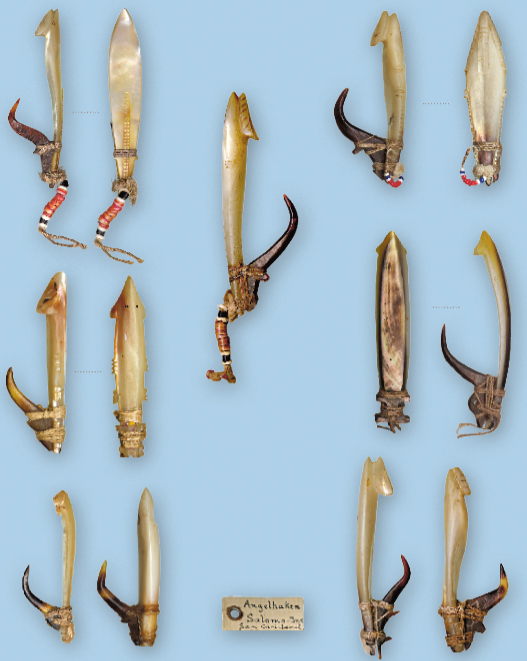
Solomon Islands, composite bonito hooks, shell, natural fibres, turtle shell, nylon, plastic, glass beads
The fish hook, a simple prehistoric tool embedded in our shared human consciousness and essential for the survival of many island civilizations, spans and unites these various cultures, beliefs, and practices, allowing us a glimpse into the soul of the Pacific. In 2012, Daniel Blau and Klaus Maaz published their first book on the subject, “Fish Hooks of the Pacific Islands,” through Hirmer. Their work served as an introduction and meticulous evaluation of fish hooks from across the entire region. Their comprehensive and passionate approach exemplified to readers the degree to which these items are more than just tools, more than just functional, but are in fact art in themselves, where the magic of each hook’s form combines with the rituals of forefather craftsmen and fishermen past. The hooks represent the visible, material part of a tradition stretching back to the dawn of human culture, serving as a sort of chronocultural marker whose forms continue to evolve in space and time.
In this case, the description of each object is essential. The maritime lives of Oceania’s inhabitants compelled them to create artefacts unique to each shore, even for the smallest and most remote islands. The trade networks made possible by the ocean enabled in turn a rich cultural exchange, and the spread of knowledge and material goods. Despite that exchange, though, the unique nature of each island or island group’s own production – the material and design of each island’s hook, the subtleties of its form or interaction of its component parts – survived.
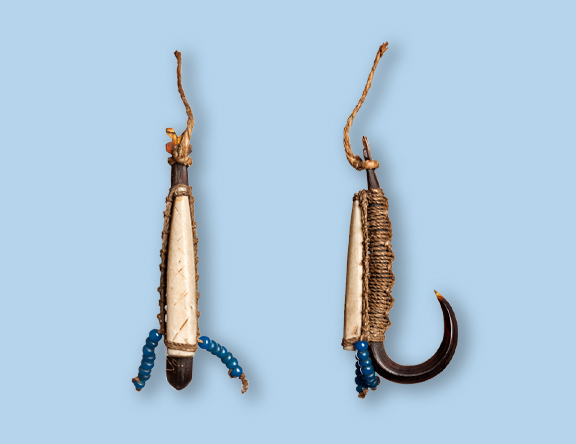
Solomon Islands, composite bonito hook, shell, turtle shell, natural fibres, glass beads
More difficult to gauge at first glance is the precise, human nature of their use. The uninitiated have no clear path to imagining the interaction between hook and the hand of its crafter, the particular form of a given hook and the perfect technique for casting it. How exactly was each hook used? Which hook was best suited for which fish? The continuation of Blau and Maaz’s illuminating work, “Fish Hooks of the Pacific Islands Vol II,”, helps make the unimaginable real. This second volume draws us back once again to the fascinating world of the Pacific, deepening our knowledge of its diverse and complex fishing cultures, practices, and rituals.
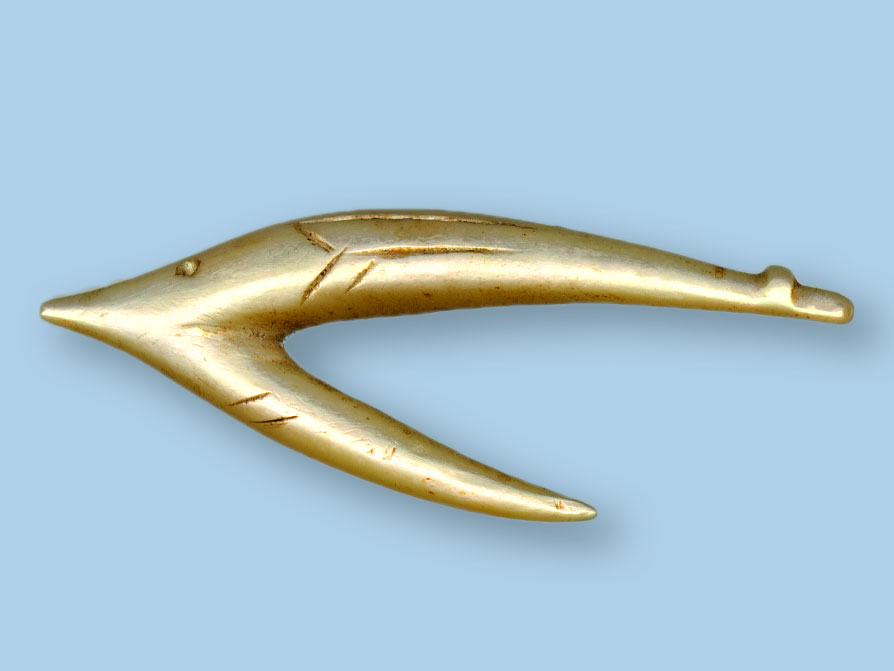
Solomon Islands (Uki/Ulawa)
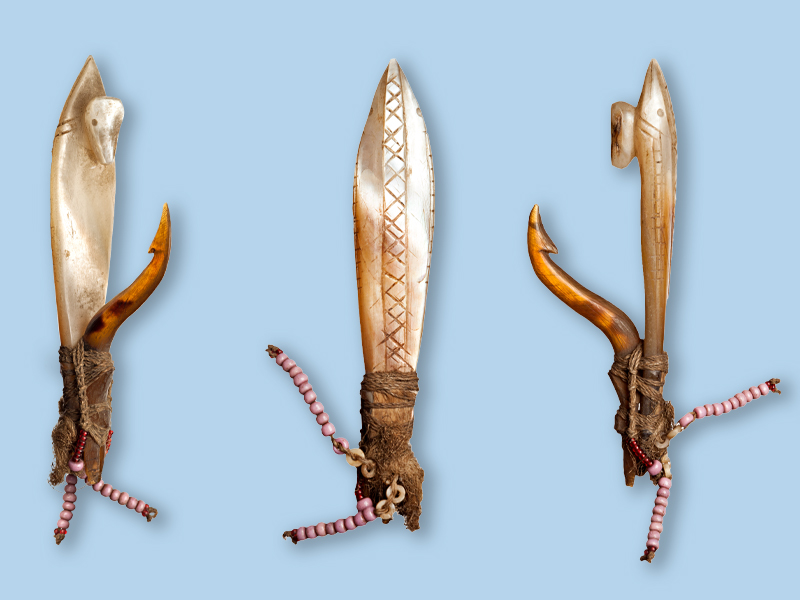
Solomon Islands, composite bonito hook, shell, turtle shell, natural fibres, glass beads
For the people of the Pacific, fishing became more than just necessary – it became sacred. Perhaps the best example is to be found in the so-called bonito cult of the Solomon Islands. “Fish Hooks of the Pacific Islands: Vol. II” paints a vivid picture for us:
Whereas the indigenous island cultures of Polynesia and Micronesia succumbed to the intrusive influence of Western civilization in the second half of the nineteenth century, the traditional culture of the Solomon Islands survived well into the twentieth century, including the all-important and omnipresent bonito cult.
Particularly prominent in the islands of the southeast Solomons, ‘bonito cult’ is the term commonly used to refer to the entire, overarching environment of sacrality surrounding the bonito and everything related to it. This encompasses a vast range of practices, objects, and beliefs – sea spirits, fishing boats, traditions and rituals – but perhaps the most important and certainly the most visible single manifestation of the cult was to be found in the initiation ceremony of the Solomons, the sometimes months-long ritual process through which boys entered manhood – maraufu.
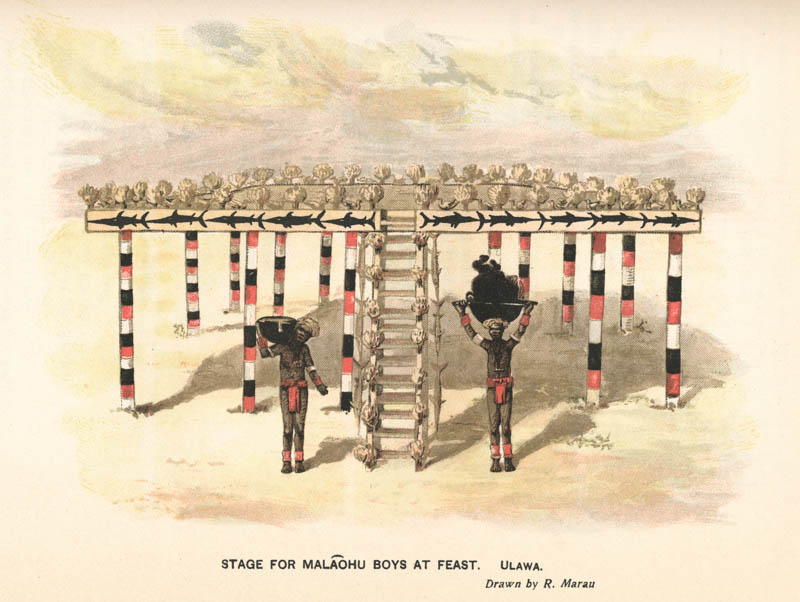
“Stage for Malaohu Boys at Feast”, Ulawa, drawn by R. Marau [Ivens, 1927:p.130-148] (2)
December through March is the windy season in the Solomons, the most important time of year for bonito fishermen. The season brings unfathomable schools of smaller fish past the islands’ coasts, and, following close behind them, large schools of sharks and other predatory fish at hunt, including, of course, the bonito. It is also in this season, therefore, that the initiation ceremony took place. Every boy had to undergo the initiation ritual, at about 13 or 14 years of age, in order to become a man, a process which, for the islanders, was intimately and inexorably bound up with the secrets of bonito fishing. Accordingly, the initiation process in its every stage and aspect is rife with bonito imagery and symbolism. The magnificent initiation platforms of the final ceremony embody this nearly mystical relationship in their very architecture. The basic form of the platform itself symbolizes a bonito, with its staircases acting as analogue to the great fish’s mouth. Entering the stairs, the boys, richly adorned and successfully emerged from their trials, symbolically enter the body of the fish. It is a moment that echoes an earlier stage and intermediate ceremony in the course of the long initiation process: after each boy returns from his first expedition alongside the experienced fishers, after he has caught his first bonito sat between the legs of his elder and grasping the rod with which the fish is hooked, he returns to shore, now an official maraufu or initiate-in-progress, where a priest awaits to cut the first-caught bonito open and anoint the new maraufu with its red, human-like blood, letting it drip across arms and legs, elbows and knees, cheeks, tongue – and flow even into the boy’s very mouth. The blood of the divinely-appointed bonito will, imbibed by those who will soon no longer be boys, make the body strong, keep joints and muscles young and sprightly. So now, at the culmination of their ordeals, do the youngest men of the island pass into the mouth of the fish.
right: [Fox, 1924: p. 348] (4)
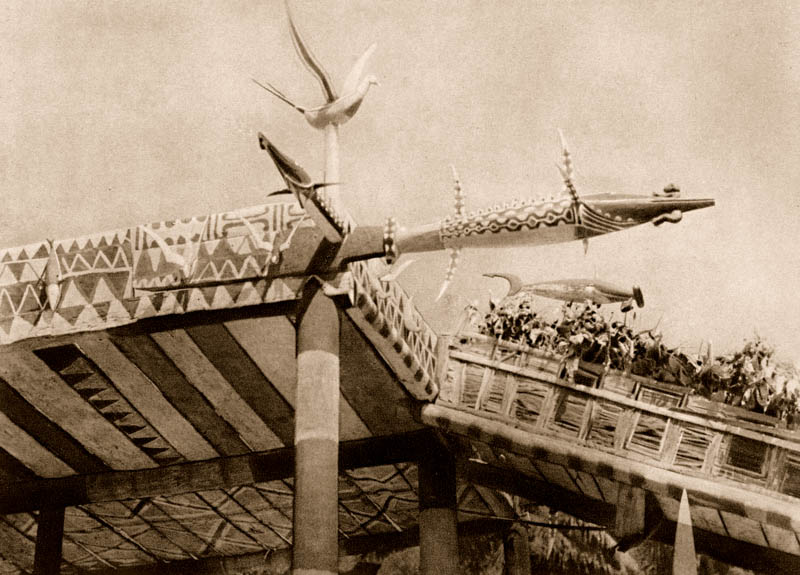
Ngora-Ngora village on Ulawa Island [Bernatzik, 1934: pl. 13, fig. 13] (5)
This final ceremony, the end of the entire initiation process, is treated with great fanfare and celebration by the entire community. Hugo Bernatzik was one of the last observers of southeastern Solomon communities when they still could be conclusively called traditional. His photographs of ceremonial platforms show wooden carvings of frigate birds perched atop the platform’s poles, above support beams jutting out and ending in their own elaborate carvings of sharks and predatory fish. Bernatzik’s camera also accompanied him when he went with bonito fishermen out to sea. He succeeded in capturing the dynamic majesty of the catch so fully that even audiences from our own century must admit to being moved by the images that resulted.
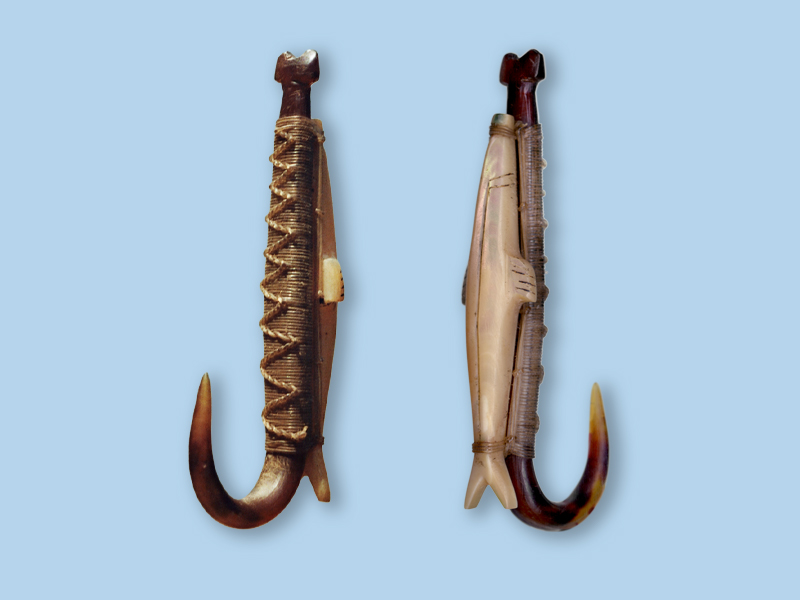
Solomon Islands, composite bonito hook, pearl shell, turtle shell with nylon lashings
This elaborate, ceremonial culture of the bonito bore witness to an ancient tradition of fishing, one which finally began to collapse before the onslaught of Western civilization in the second half of the 20th century.“Fish Hooks of the Pacific Island: Vol. II” brings the extensive, profound research and discourse of Volume I to a triumphant conclusion, casting a much-needed light upon the extraordinary, diverse, and fragile human genius of the Pacific.
“Solomon Islands, one-piece fish hooks, shell, pigments and plant fibre
This limited-edition book is the ultimate resource on the fish hooks of the Pacific Islands. More than 450 fish hooks and dozens of related objects are presented here in their true size (1:1) for the very first time, spread across more than 450 pages and more than 80 full-page or fold-out plates, and accompanied by 500 accessory illustrations, 45 photos of people and islands, 50 maps, and comprehensive expert commentary.
Foreword and texts by Daniel Blau and Klaus Maaz.
Essays by Anthony JP Meyer and Sydney Picasso.
30 x 25 cm, hard cover with embossing and dust cover.
Please contact us for more information: fishhooks(at)danielblau.com
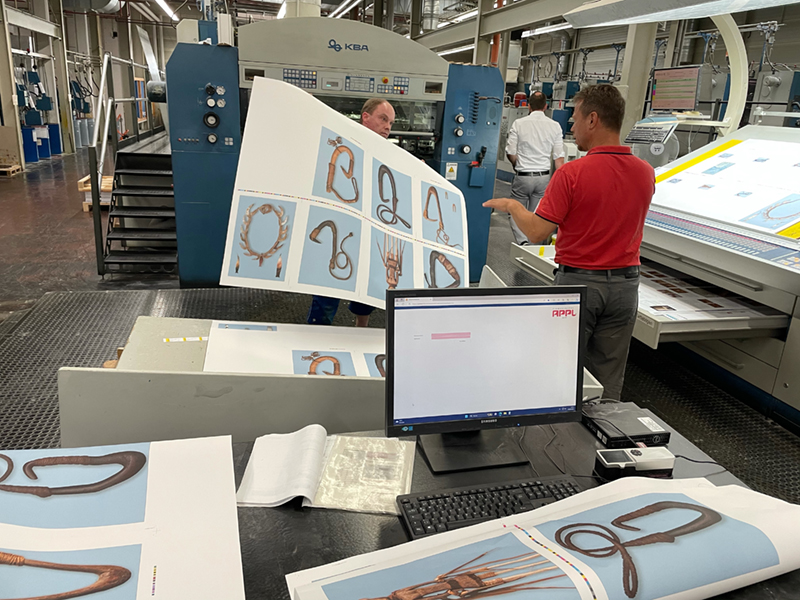
appl Druck GmbH in Wemding, Bavaria
Bibliography
(1) Bernatzik, Hugo Adolf. Südsee (Leipzig, 1934)
(2) Ivens, Walter George. Melanesians of the South-East Soloman Islands (London, 1927)
(3) Ivens, Walter George. Melanesians of the South-East Soloman Islands (London, 1927)
(4) Fox, Charles Elliot. The Threshold of the Pacific (London, 1924)
(5) Bernatzik, Hugo Adolf. Südsee (Leipzig, 1934)
ORDER HERE ON DANIELBLAU.COM
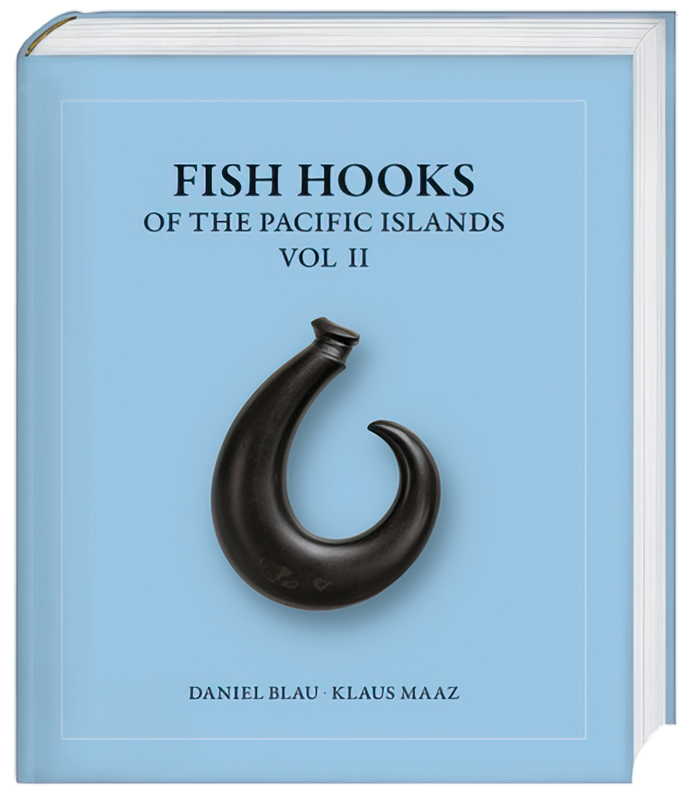
Other Diversions
MAGAZIN BLAU INTERNATIONAL British Museum - Online Collections Expedition Magazine, Penn Museum: Male Initiation in Aoriki (Salomon Islands) Friends of Tobi Island Frontiers in Marine Science: Na Vuku Makawa ni Qoli: Indigenous Fishing Knowledge (IFK) in Fiji and the Pacific Frontiers in Marine Science: The Role of Ancestral Seascape Discontinuity and Geographical Distance in Structuring Rockfish Populations in the Pacific Northwest Future Exhibitions and Installations at the Getty Centre, California Tavake Pakomio: Learning from our Ancestors: Exploring Ancestral Island Wisdom and Practices on Rapa Nui The Pacific Collection Access Project - French Polynesia, Google Arts & Culture The Serious, Sustainable (and Sometimes Celebratory) Indigineous Fishing Methods of Polynesia Women and Fishing in Traditional Pacific Island Culture Cook Islands: Traditional Fishing Methods 2012 Pacific Island Ethnic Art Museum, California
David Byrd
DANIEL BLAU, at its Maximilianstraße gallery, is pleased to present an exhibition of seven exceptional paintings by American painter David Byrd, spanning a period from the 1980s to 2008.
Byrd was born in Springfield, Illinois in 1926. He joined the Merchant Marines as a teenager and was subsequently drafted into the US Army during the Second World War. His service as an artilleryman permitted him to take advantage of the G.I. Bill for his studies, which he briefly pursued at the Dauphin School of Art in Philadelphia before transferring to the Ozenfant School of Fine Arts in New York City.
His academics behind him, Byrd spent most of the 1950s working a variety of jobs, all of which had one thing in common: a minimal demand on Byrd’s time, allowing him plenty of opportunity to paint. He worked as a janitor and a postman, at a bar and a cinema, before, in 1958, taking work as an orderly in the psychiatric ward of the Veterans Administration Medical Hospital in Montrose, New York. Over the following thirty years, Byrd took his experiences there and, very quietly, immortalized them. The unusual images of poignant potency he created, imbued with the disquieting atmosphere of the institution, have become his best-known work. Byrd’s very particular, distinctive style of painting – simple, flat shapes, executed in pale pastel tones – is employed with a keen sensitivity and melancholy tenderness in the artist’s recollections of the patients he has seen, of their inner struggles with the trauma of war and its aftermaths.
Byrd’s genius lends to all of his paintings, including those depicting people and encounters outside of the hospital, a very particular aura; through his handling of faces and their features, and the overall simplicity of his compositions, he evokes a sense of tension and psychological separation between subject and viewer. Nevertheless, a certain warmth is betrayed in his more sober scenes: his compassion is unmistakable in the softness of his small, countless brushstrokes, in the visible care and sensitivity with which the artist made them.
Following his retirement in 1988, Byrd bought a house in Sidney Center, New York, where he lived in relative seclusion until his death in 2013. The first professional exhibition of his work had taken place earlier that same year, at the Greg Kucera Gallery in Seattle; his character and lifestyle meant that the artist rarely showed his art to others, so it was only thanks to a happenstance discovery by a neighbor, and only in 2012, that it came before the public eye at all. A host of exhibitions followed, at various galleries and institutions including the West Point Museum. Today, the artist’s estate is represented by the Anton Kern Gallery, where his work continues to be exhibited.
The seven works currently displayed at DANIEL BLAU cover a long period of Byrd’s creative career, so differences in Byrd’s visual language when dealing with different themes can be quite clearly recognized. “Woman in Car, Filling Station,” from around 1981, distinguishes itself in the artist’s attention to a setting’s background and subject’s surroundings when working with genre scenes. What results in that case is a wider range of colors and a fuller composition when compared, for instance, to portraiture like 2008’s “Man.” The lone figure in that painting braces himself against the cold, facing away from the viewer in apparent reverie; he is all that occupies the small canvas. This sort of visual minimalism is typical of Byrd’s hospital paintings, which he continued to create, from the vast halls of his memory, long after retirement.
DOWNLOAD press text
Exhibition Dates:
November 2, 2023 – January 16, 2024
11am – 6pm | mon – fri
Maximilianstraße 26, 80539 München
The works in the exhibition are for sale. Please contact us for availability and prices.
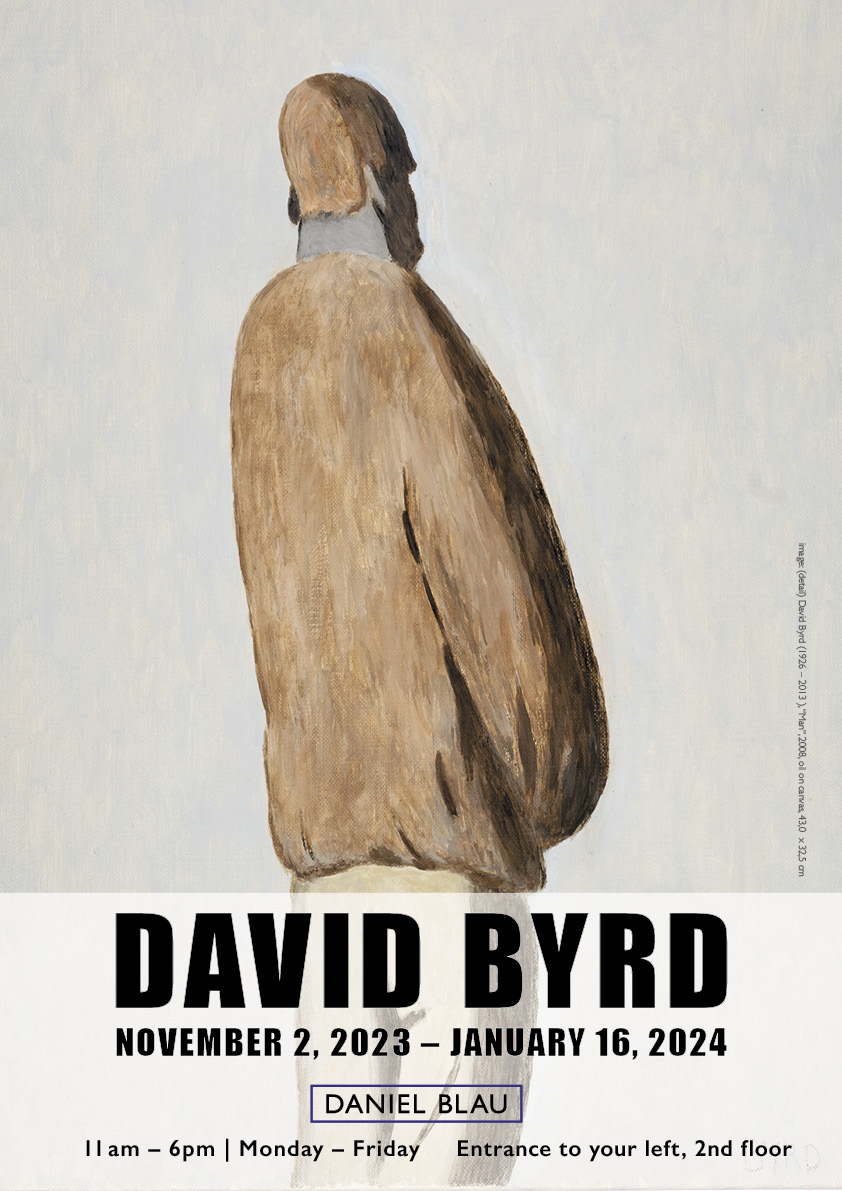
Paris Photo 2023
DANIEL BLAU is pleased to present three exhibitions at Paris Photo 2023, each one a special insight into a particular and fascinating facet of photography.
Exceptional NASA Pictures
These photographs draw us into the extraordinary world of American space exploration in the 1960s and 70s. During this period of historically groundbreaking discovery, every achievement of the Space Race became a global sensation, and this once - fresh sense of wonder, awe and inspiration lives on in these photographs. They represent not only the significance of this period for scientific innovation, the advancement of technology and the furthering of mankind’s knowledge of the universe, but also the artistic capabilities of such phenomenal images to transport the viewer, instantly igniting emotion and curiosity.
Featuring photographs taken on such celebrated missions as (among others) Friendship 7, Gemini 4, Apollo 11 and Mariner 9, this exhibition takes us into the heart of the early space exploration. A photograph taken on the Apollo 11 crew’s return journey to Earth shows the Moon as it had never been seen before - a conquest of humanity, a glittering prize newly-won. The first ever EVA (extravehicular activity) – or spacewalk – performed by an American is shown in an oversized photograph of Ed White during Gemini 4. The palpable silence of the image reflects its wondrous subject, and the insufficiency of words to produce a response to the sight of it. Mariner 9’s photographs of the Martian surface describe another historically unprecedented encounter with the Solar System; as the first spacecraft ever to orbit another planet, its over 7,000 images of Mars reflect the ambition and intellectual hunger of NASA of this era. Another photograph in this exhibition was taken by John H. Glenn, Jr. during Friendship 7, the solo mission upon which, in February 1962, when became the first American to orbit the Earth. His color photograph of the brilliantly - lit space particles he famously described as ‘fireflies’, for lack of knowledge to explain them at the time, awakens the sense of fascinated mystery with which the world then viewed space, and which drove the determination of scientists to seek, scrutinize and attempt to ‘solve’ it.
Masterworks of Photo Retouching
The second of DANIEL BLAU’s exhibitions at this year’s Paris Photo showcases the striking and unusual effects of photo retouching in the 1930s, 40s and 50s.
During this time, the potential to alter the perceived meaning of a photograph was explored to thrilling effect. Retouching using a stylus could add detail, reinforce lines, enhance contrast and easily bring any element of the photograph to the fore. The introduction of gouache allowed dramatic emphasis to be created. Being so dark and impenetrable, it could also subtly obscure a photograph’s features as desired by the editor, or create impactful silhouettes, as we see in “Exercises”.
Among these photographs are also several amazing examples of the art of airbrush. A small, handheld tool that was originally invented in 1879 by the American Francis E. Stanley, the airbrush combines paint with blown air to enable a smooth, even application of pigment across a surface – a spraying technique which can be thought of as a precursor to the spray-paint canister of today. Stanley used the airbrush to colorize images, but it can also add entirely new visual elements to a photograph, as this exhibition demonstrates. For example, the light translucency of the airbrush used on “Normandy, France: Ours Not to Reason Why” gives the cross its ghostly, ethereal appearance, exquisitely embellishing both the subject matter and the artistic meaning of the image.
This curation of photographs exhibits the capacity of photo retouching to evoke a sense of the unexpected, of surprise, curiosity, imagination and experimentation, and to add layers of complex, nuanced messaging to captivating, existing photographs whether satirical, commercial, historical or political.
Daido Moriyama – New Works
This exhibition features 22 new paintings Japanese artist Daido Moriyama based on photographs he had taken in New York City in 1971. These pictures perfectly encapsulate Moriyama’s unmistakeable style of his trademark strong contrast. Here the artist achieves an incomparable sense of atmosphere by using his concept of are, bure, bokeh (meaning grainy, blurred and out of focus) to document his immediate surroundings – the everyday occurrences of New York City encountered by his camera.
Each canvas displays two consecutive exposures in a single negative, the result of Moriyama’s own modification of his 35mm camera; the artist chose these moments spontaneously but communicates them with much more consideration. By showing us each instant from two perspectives at once, Moriyama invites us closer to them, letting us begin to absorb whatever intangible, fleeting impulse it was that prompted him to take out his camera.
Download press release Paris Photo 2023
ONLINE VIEWING ROOM
PARIS PHOTO
Grand Palais Éphémère
Place Joffere
75007 Paris
Booth B14
Fair Dates:
Vernissage (by invitation only):
Opening Hours:
Wednesday,
November 8, 2023
5 pm – 9 pm
Public Opening:
November 9 – 11, 2023
Opening Hours:
1 pm – 8 pm
November 12, 2022
Opening Hours:
1 pm – 7 pm
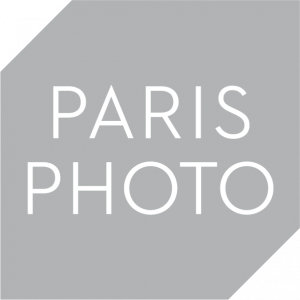





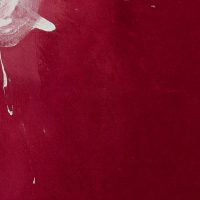
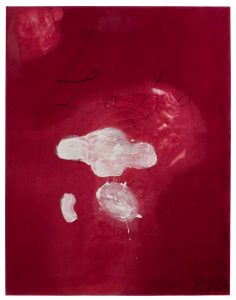
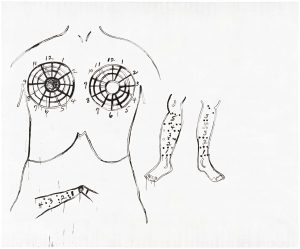
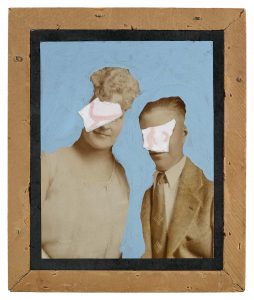
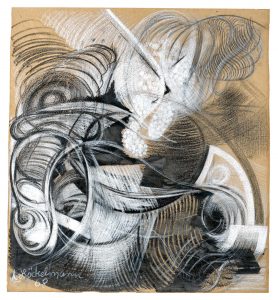
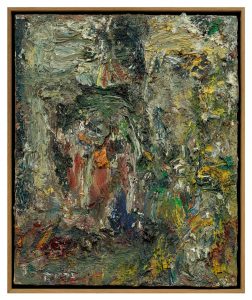
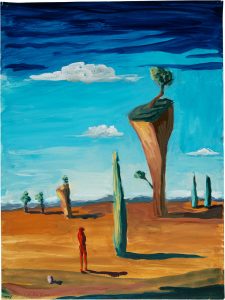
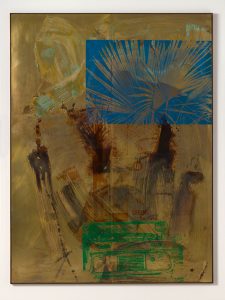

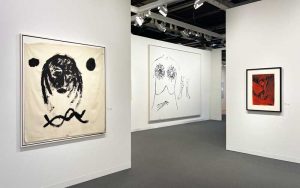







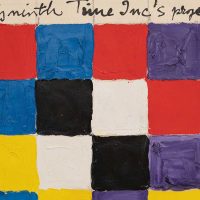

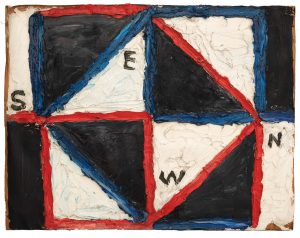
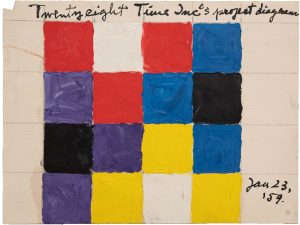

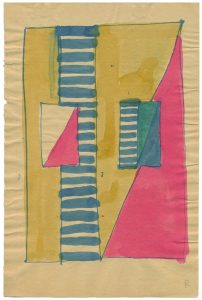
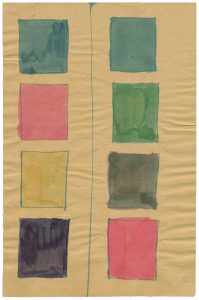
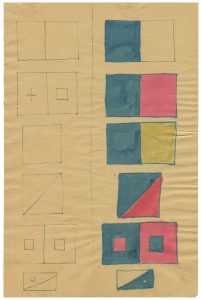

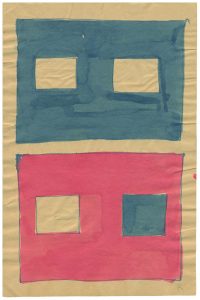


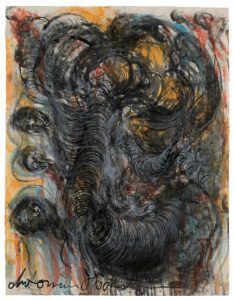
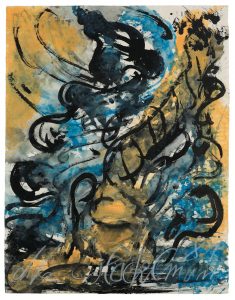

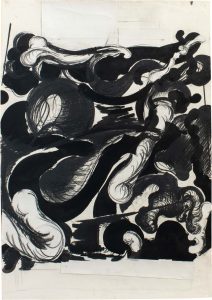
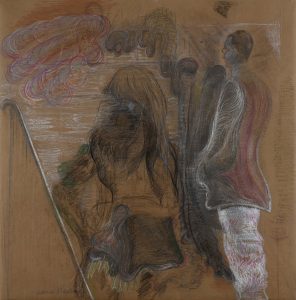
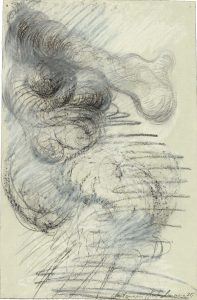
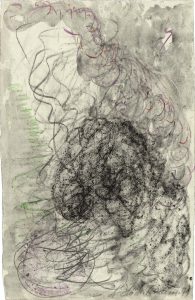
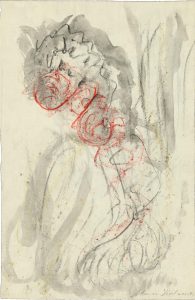
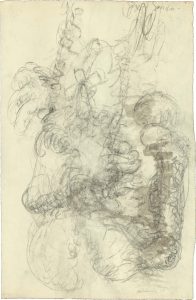
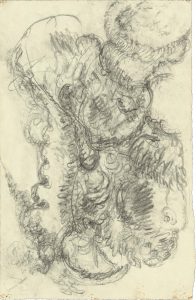
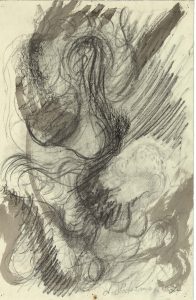

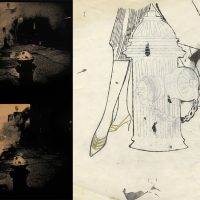
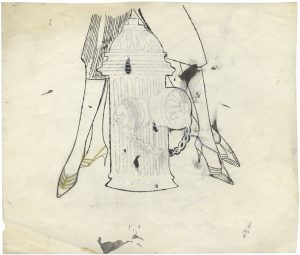
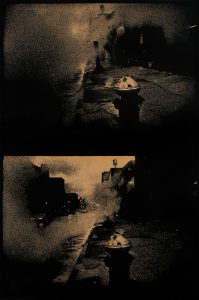
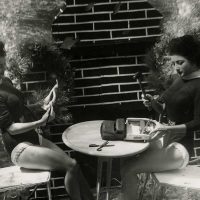
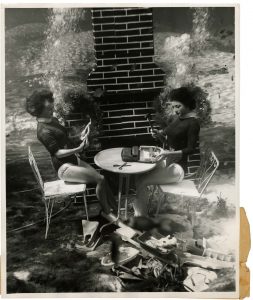
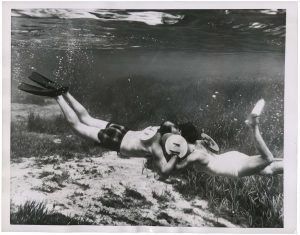
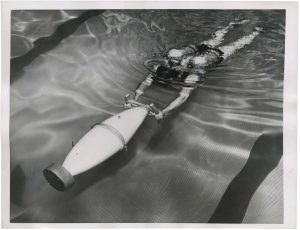
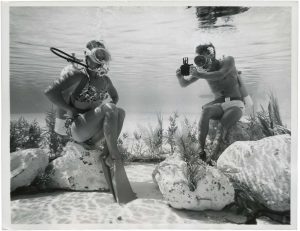
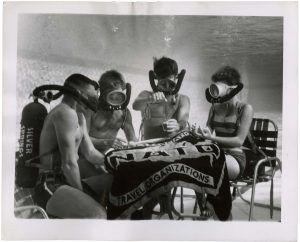
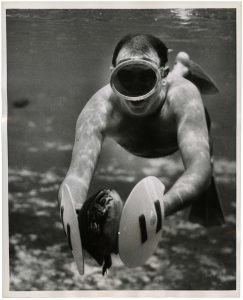
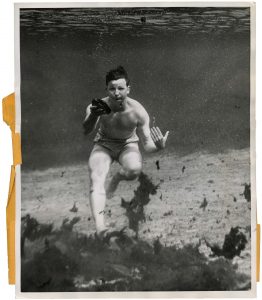
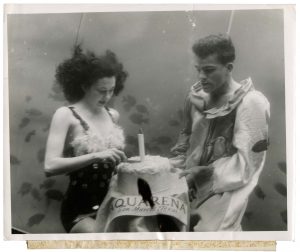
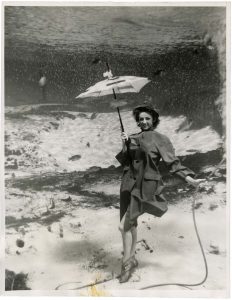
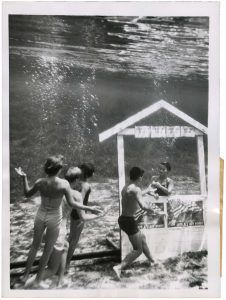
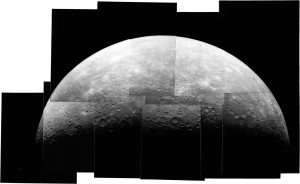
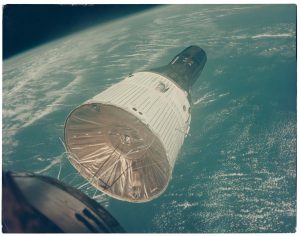
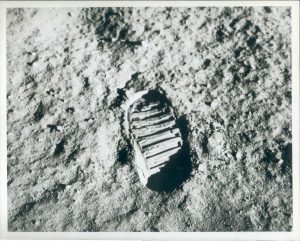
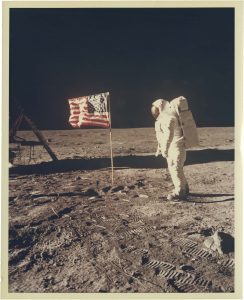
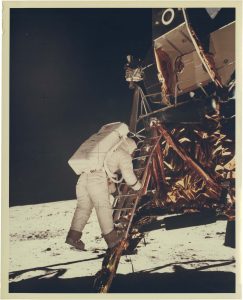
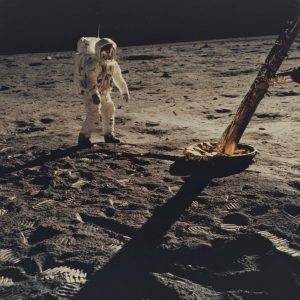
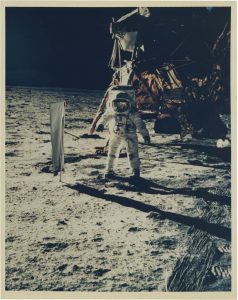
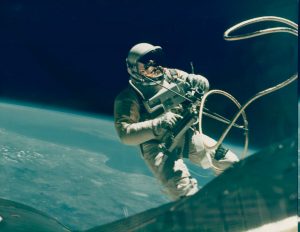
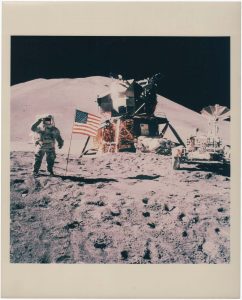
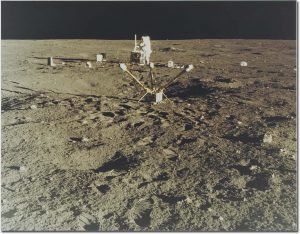
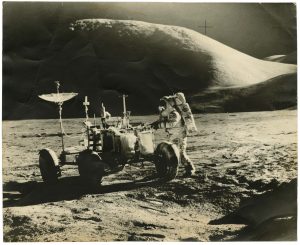
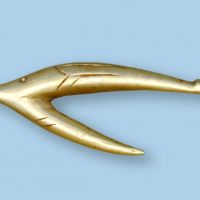
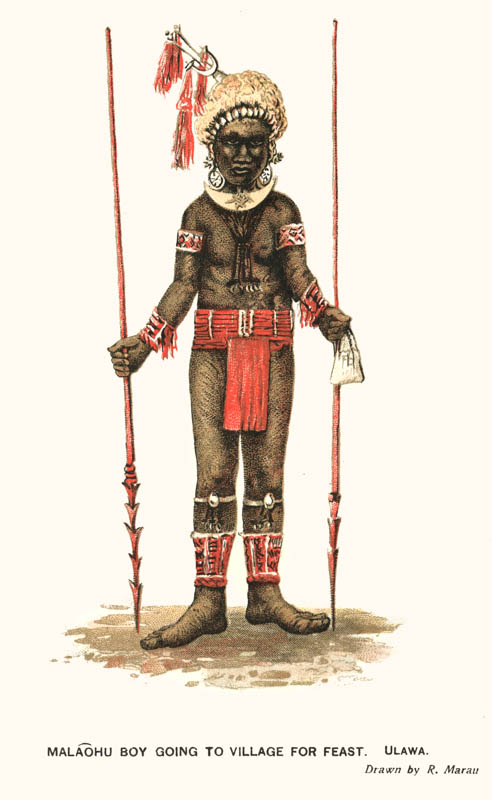
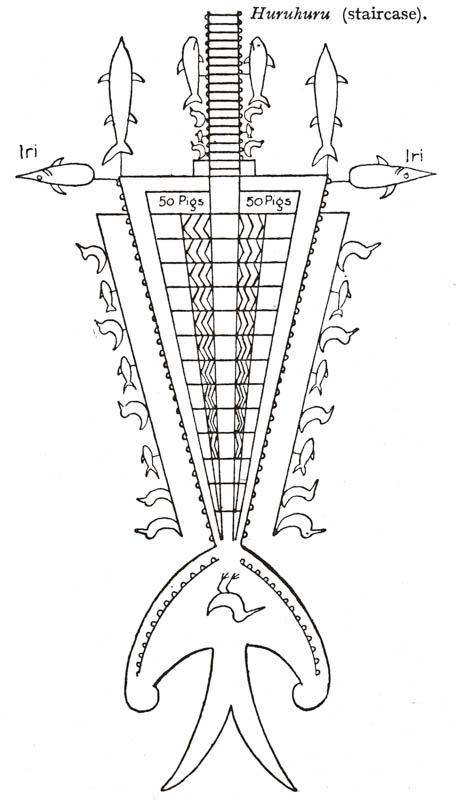
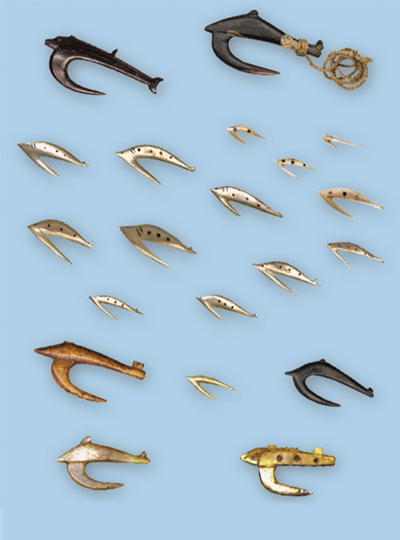
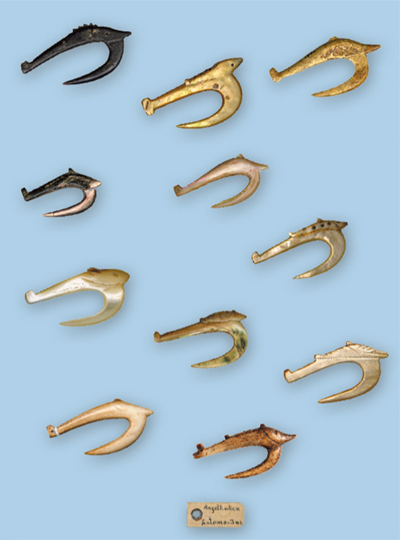
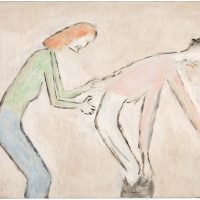
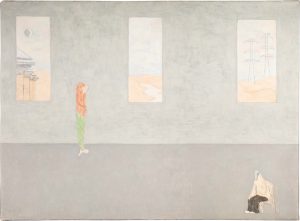
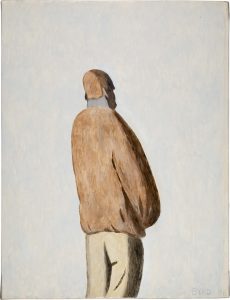
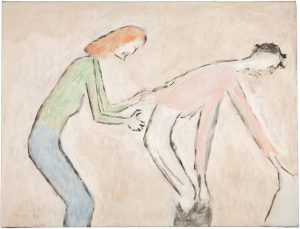
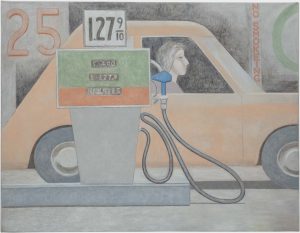
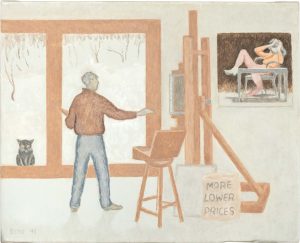
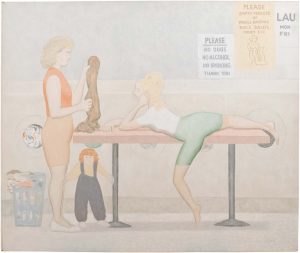
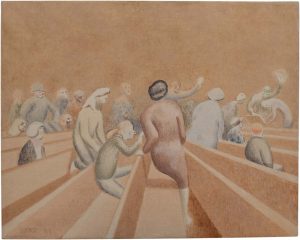
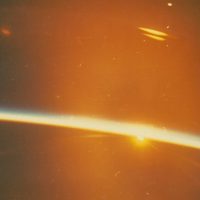
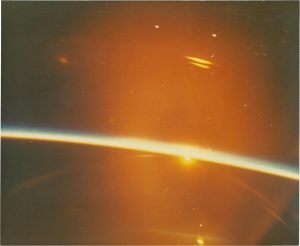
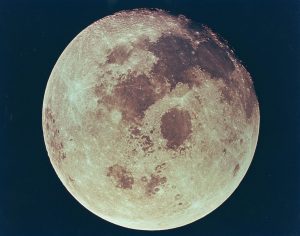
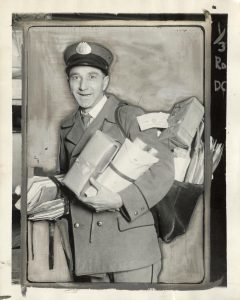
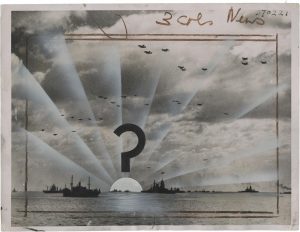
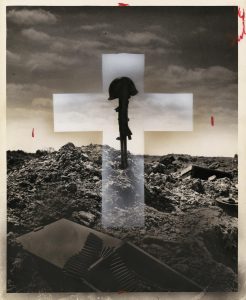
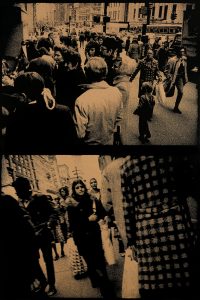
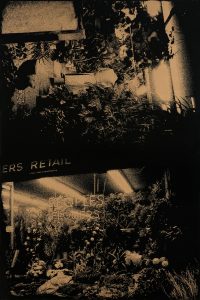
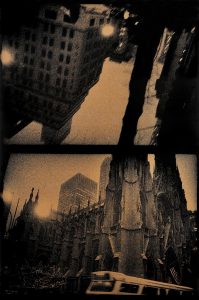

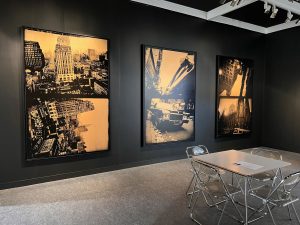
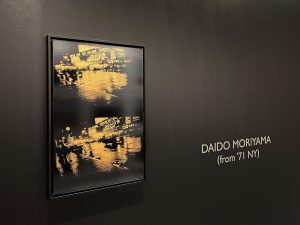
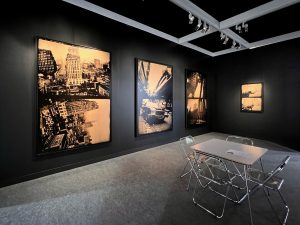
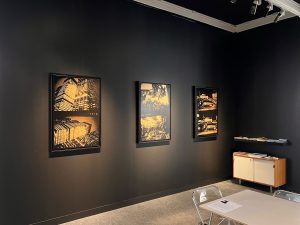
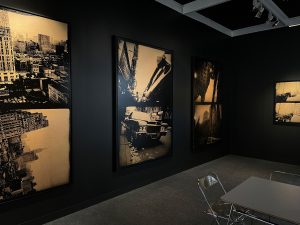
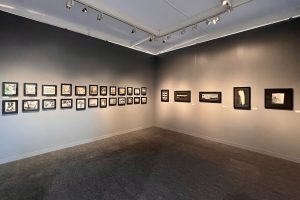
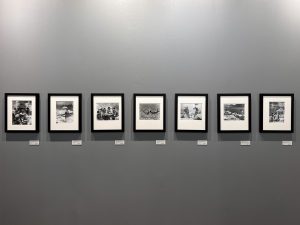
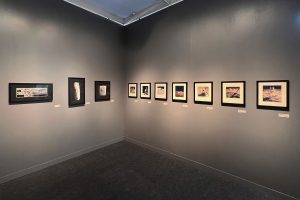
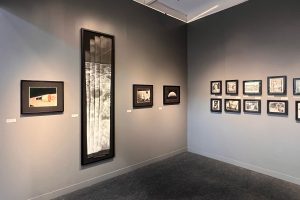
 +49 89 29 73 42
+49 89 29 73 42